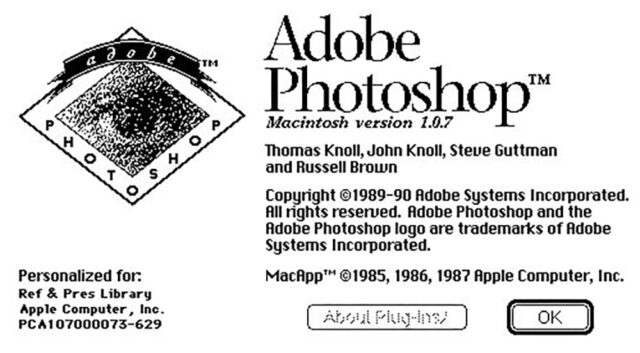In the world of software development, the success of many well known companies can be attributed to the contributions of their developer community. These devs play a pivotal role in expanding and enhancing the capabilities of software programs, taking them beyond their out-of-the-box functionalities. Two examples of this are Adobe Photoshop and the Apple ecosystem, particularly the iPhone.
Photoshop

Adobe Photoshop, the 800lb gorilla of photo editing software, has evolved into a complex and multifaceted program over the years. Its journey from version 1 to the present day has been marked by continuous innovation and expansion. A significant driving force behind Photoshop’s enduring success lies in the vast ecosystem of third-party plugins.
These plugins have transformed Photoshop from a “simple” scanning to tool into a versatile platform. Whether it’s seamlessly connecting to scanners, harnessing the power of artificial intelligence, or introducing novel features, third-party developers have significantly contributed to the software’s functionality. The collaborative efforts of third-party developers has not only expanded Photoshop’s capabilities, they also empowered users like me needing specialised tools.

For decades, the marriage of Photoshop and third-party plugins has been instrumental in catering to the diverse needs of photographers, graphic designers, and other creative professionals. The success story of Photoshop is a testament to the symbiotic relationship between the software giant and the vibrant community of developers working tirelessly to push the boundaries of digital creativity.
iPhone
In the realm of recent technology, the iPhone stands as Apple’s greatest innovation. The success of Apple’s products extends far beyond sleek design, and is greatly amplified by the number and quality of third-party apps available on the App Store.
The iPhone, initially conceived as a revolutionary phone, has metamorphosed into a powerful and indispensable device, thanks to thousands of developers worldwide. From photography and productivity to health and entertainment, the App Store is a treasure trove of applications that cater to virtually every aspect of our lives.

Take, for example, the transformation of the iPhone into a sophisticated photography tool. Professional photographers like me have seen the shift from traditional tools, such as colour temperature meters and filters, to innovative iPhone apps that can automatically adjust our LED lighting to match conditions at each location. This not only exemplifies the transformative power of third-party development but also showcases how technology can simplify and enhance professional workflows.
Collaboration with Customers: A Recipe for Success
Beyond the realm of third-party developers, software companies are increasingly see the value of collaborating directly with their customers. Professionals, such as photographers, are becoming integral contributors to the development process. Personally, companies like Adobe, Microsoft, Capture One, and Nikon have actively reached out to share my experience in real-world challenges.
Collaboration involves a dynamic exchange of ideas, with software companies actively seeking feedback to refine and enhance their products. This customer-centric approach not only ensures that software aligns with the needs of its users but also fosters a sense of community and shared innovation.
As technology continues to advance, the symbiotic relationship software companies, developers, and users will undoubtedly be a driving force in shaping the future of digital innovation.
